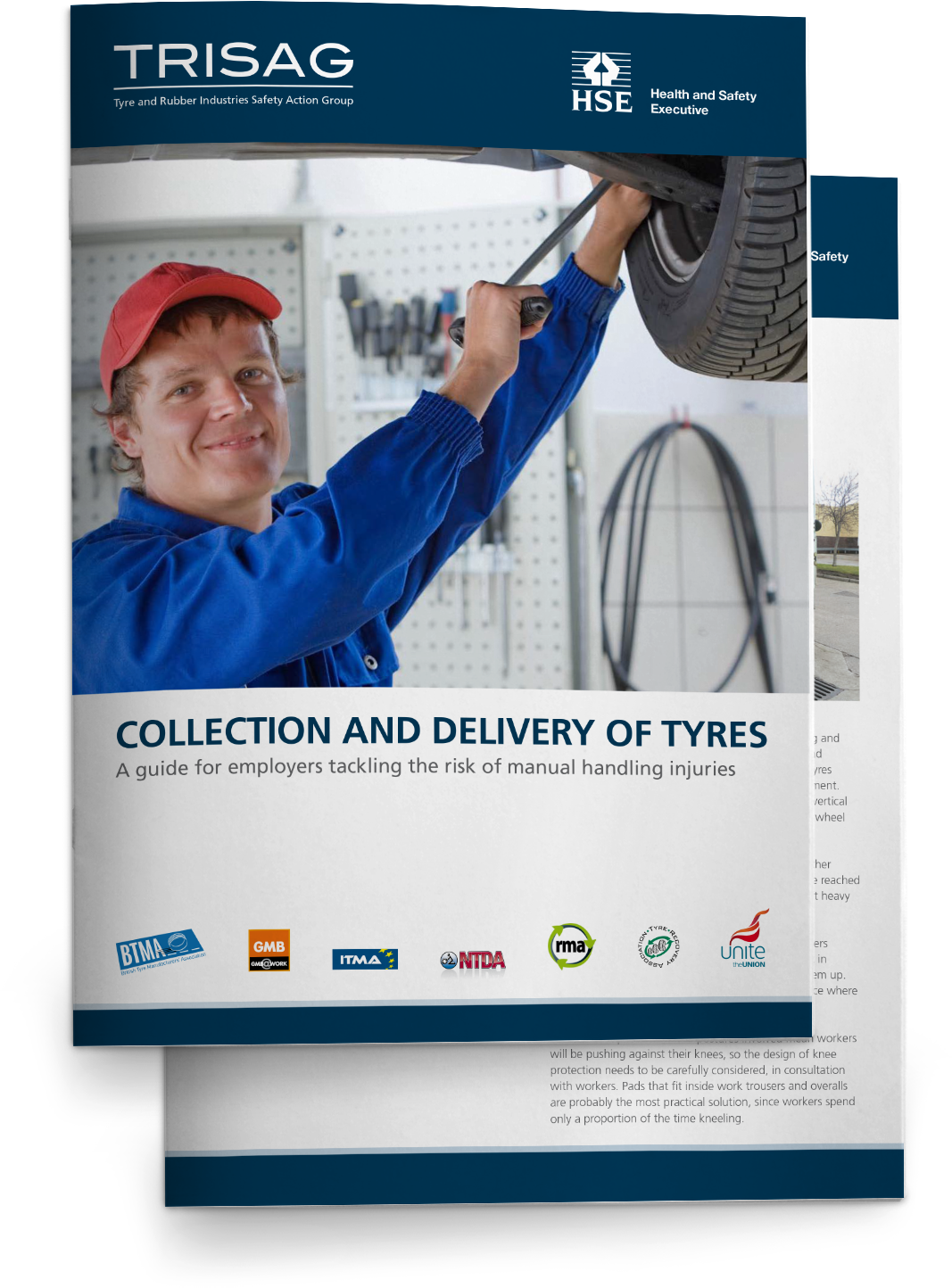BTMA members have a longstanding commitment to protecting health and safety in the work environment. This engagement has extended beyond manufacture to address tyre-related issues in distribution and service activities. BTMA supports continuously improving performance through the sharing of industry best practice and the pursuit of dialogue between the trade unions, employers and the Health and Safety Executive.
Over recent years between 3 and 8 workers have been killed or seriously injured EVERY YEAR as a result of vehicles collapsing when jacking. Yet these accidents could easily have been avoided if a few basic precautions were taken EVERY TIME a vehicle is jacked.
Right equipment
- Wedges or suitable chocks to stop the vehicle rolling whilst jacking and raised.
- A jack in good working order that has a safe working capacity greater than the load you intend to lift. The law requires that jacks are inspected thoroughly every 12 months.
- Fully functioning axle stand(s) of the correct size and load capacity. Make sure the correct stand adjuster pins are used; bolts, pins or screwdrivers are not suitable or safe. Axle stands should be inspected annually. Builder’s bricks and blocks should not be used as vehicle supports.
Right preparation
- Ensure you fully understand how to use the jack in accordance with the manufacturer’s instructions.
- Plan the job, don’t improvise. Assemble the necessary equipment before you start. Don’t leave the vehicle balanced on a jack while you go to look for an axle stand.
- The area where you intend to jack the vehicle must be safe. If working at the roadside follow the correct procedures to create a safe working environment.
- The ground you intend to jack from should be flat, level and solid. Wherever possible avoid jacking a vehicle on soft or uneven surfaces. When this is unavoidable place the jack and axle stand on suitable load-bearing plates to distribute the weight evenly over the area.
- Locate the safe jacking points on the vehicle. You will need one for the jack and another for the axle stand. It is very important that these are found as jacking from spring hangers, air bag brackets, etc., may prove to be an expensive or fatal mistake.
Right method
- Chock at least one of the other wheels to prevent the vehicle from moving whilst working on it.
- If using hand tools slacken off the wheel fixings. Give each wheel nut or wheel bolt no more than half a turn. Do not fully remove any wheel fixing whilst the vehicle is still on the ground.
- Place the jack at the correct jacking point. Raise the vehicle very slightly. Check the jack is still correctly located and is vertical. If you are unsure, lower the jack, reposition it correctly and start again. Only when you are happy the jack is correctly in place should you continue.
- In some circumstances it may be impossible to get the jack under the correct jacking point straight away and in this situation extreme caution should be deployed. It is imperative that the jack engages with the vehicle as fully as possible. Failure to do so may lead to vehicle collapse. In this instance methods such as packing as you jack should be used until the jack can be correctly installed. Ensure suitable packing is used such as hardwood blocks.
- Pay attention at all times as you raise the vehicle. Listen and look for things that do not appear to be normal. Ensure the jack is still in a vertical position and in full contact with the jacking point. If you see or hear anything that you deem not to be correct lower the vehicle immediately. Never place any part of your body under the vehicle when checking.
- Stop raising the vehicle once it is high enough to position an axle stand. This task is crucial to your safety and requires care and vigilance. Keeping your head and body clear of the vehicle slide the axle stand to the chosen location. Only your arm should be under the vehicle, keeping it as close to the ground as possible. Never place your head or shoulders under the vehicle.
- Now with the axle stand in the correct position check everything is safe and secure before lowering the vehicle slowly onto the axle stand. Never leave the weight on the jack; use the axle stand as the primary support. Leave the jack under the jacking point. Once the weight is fully placed on the axle stand you should make absolutely sure that it is safe before starting work.
- To lower the vehicle, ensure the jack is securely located at the jacking point. Raise the jack to take the weight from the axle stand. Carefully remove the axle stand whilst keeping your head and body clear of the vehicle. Slowly lower the jack and remove it from under the vehicle. The vehicle is only 100% safe when it’s fully on the ground.

